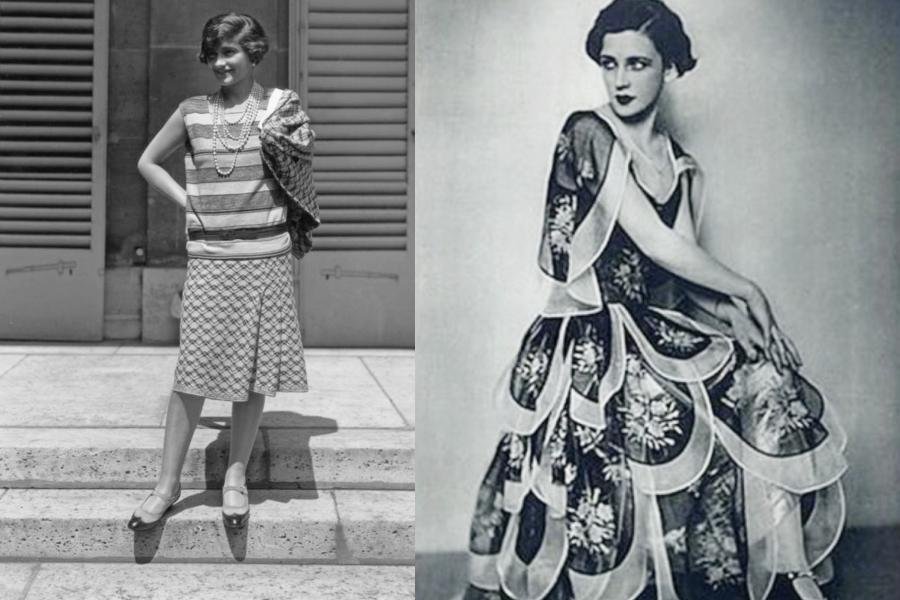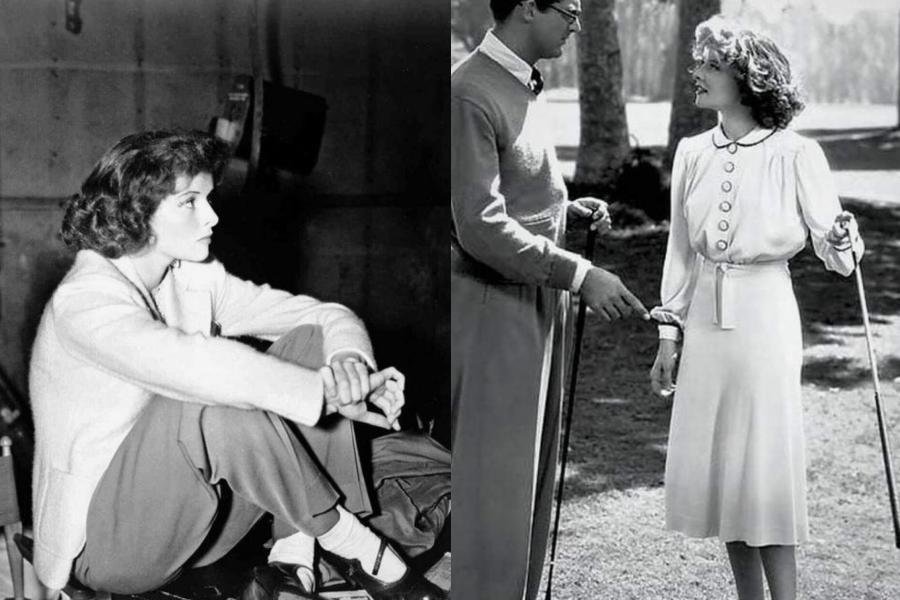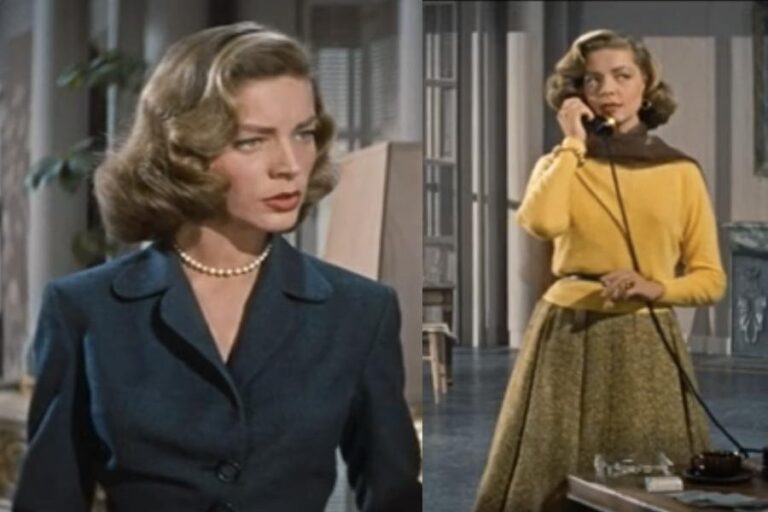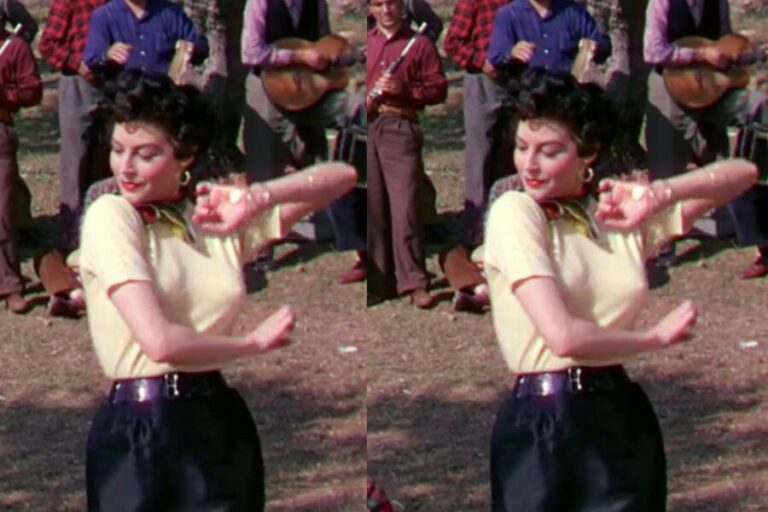Flappers to Vintage Glam – 1920s and 1930s Fashion
This post may contain affiliate links
What was fashion like in the 1920s and 1930s? 1920s and 1930s fashion, including 1920s flapper girl style, and 1930s vintage glam fashion.

This post is all about 1920 and 1930s fashion
What was women’s fashion like in the 1920s and 1930s?
Fashion in the 1920s was boyish with a straight silhouette and the iconic flapper dress.
1930s fashion became more feminine with bias cut dresses that showed off the feminine figure.
Hollywood was also becoming a major fashion influence in the 1930s, with Old Hollywood Glamour having an influence on 1930s fashion.
In the 1920s, the fashion style was boyish with a straight silhouette.
It was “in” to be flat chested with no hips.
Think of the dropped waist and boxy shape of the iconic flapper dress with a short hemline.
This style of dress hid the feminine silhouette and make the figure appear straight up and down with no waist.
1930s fashion embraced a more feminine silhouette and allowed a natural waist and some curves to be seen.
1930s fashion is recognizable for the slinky evening gown with low backs that hugged the curves and gave a long, curvy silhouette.
Hello, vintage glam!
Women’s trousers were beginning to be adopted by fashion pioneers and the bias cut became a popular look, popularized by Madeleine Vionnet.
Although she created it in the 1920s, it became more popular in the 1930s.
The bias cut (fabric cut at a 45 degree angle instead of straight) allowed dresses to have more a drape which would cling to a woman’s body better.
This contributed to the fluid look that is so popular in 1930s dresses.
1920s fashion and the Jazz era

In the 1920s, the first world war had just ended.
It was an exciting period of change with new inventions and modern technology ushering in the jazz age.
This generation was flooded with new technology that was rapidly becoming adopted.
With technology development sped up during the first world war, now things moved at a faster pace.
Cars! Radio! Television! Airplanes!
New inventions like the radio and film swirled around added to the feeling of optimism.
Jazz music, aided by the spread of technology like radio became popular and this period of time is often called the jazz era.
It was an exciting period of decadence, and the shaking off of the multiple layers worn by earlier generations.
Say goodbye to corsets and hello to higher hemlines.
This feeling of excitement lasted until the New York stock market crash at the end of the decade.
Also, in WWI, with men at war, women had to work in jobs traditionally held by men.
Similar to what happened after WWII, after the end of the war, not all women returned home, resulting in more women in the workplace.
This resulted in a greater independence for women with the fashion of the 1920s reflecting that feeling.
What style was the 1920s?
The iconic flapper dress, or flapper look, with a dropped waistline and a higher hemlines (compared to previous decades) was the go-to silhouette.
It’s recognizable by it’s dropped waist and knee length hemline.
The silhouette was straight and boyish and more flattering on women without a lot of curves.
Thus, women began dieting and exercising to achieve a flatter figure.
1920 style Accessories, hair and makeup

Cloche hats are perhaps one of the most recognizable 1920s accessories along with a long string of pearls worn over the flapper dress.
Usually, the distinctive helmet like shape is associated with flapper fashion.
Cosmetics were also starting to be used, and young women would apply brighter red lipstick and tweeze their eyebrows, a contrast to the more natural style of cosmetics used in the past.
During the 1920s, the short bob hairstyle was popular, again, emphasizing a more boyish look.
Towards the end of the 1920s, a little longer hairstyle came back in, and by the 1930s hair was long again.
1920s Evening dresses
For evening wear, the dresses had a mix of hemlines from shorter to longer.
There was the flapper style dress that hit right below the knee, or the dress could go longer in the evening.
Fringes, Sequins, beads, and elaborate embroidery fancied up evening dresses.
Shiny fabrics were also used to up the glam factor.
A new metallic lame fabric became popular in gold and silver for evening gowns.
For more on 1930s evening gowns:
You’ll Love these Vintage Glam 1930s Evening Gowns
19 Stunning Vintage Glam Outfits

1930s fashion
After the stock market crash in 1929, the Great Depression was in full force in the 1930s, having an influence on fashion.
Fashion became more conservative, with women’s skirts and hairstyles becoming longer again.
For the daytime, the popular hemline length was between the knee and ankle.
Dress were commonly worn, as well as womens skirt suits.
Women’s trousers weren’t yet common place, but they were beginning to become a thing, worn by Old Hollywood Glam stars like Marlene Dietrich and Katharine Hepburn.
With the recession in full force in the United States, the movies became a form of escapism.
In a surprising contrast to the economic depression, evening wear in the 1930s is glam to the max, influenced by Old Hollywood.
The glamour of the movies helped people escape from the realities of everyday life.
A more structured shoulder for women’s clothes begins to emerge in 1930s fashion, beginning to resemble the iconic 1940s utility suits.
At the end of the 1930s, the world became embroiled in war again, with world war II raging in Europe, thus beginning to usher in the fashion of the 1940s.
For more on casual 1930s fashion:
Casual 1930s Fashion – Your Guide to Casual 30s Outfits
1930s Day dresses
In the 1930s, women’s dresses had fluid fabrics thanks to the bias cut that emphasized women’s curves with a natural waist.
Dresses were often printed in a variety of prints.
The practical house dress was made from more basic fabrics like cotton and was was simpler.
For more on 1930s dresses you might like:
1930s Vintage Dresses and Fashion for Women

1930s Accessories
Belts were a common accessory of the 1930s as they emphasized the natural waist.
The cloche hat of the 1920s began to get replaced by what we know today as the panama hat.
Mary Jane shoes were popular during the 1930s as well as women’s oxford style shoes.
1930s Evening dresses

Evening dresses were long again in the 1930s, dramatically reaching the floor, compared to the shorter styles of the 1920s.
Old Hollywood had a large influence on evening wear.
People flocked to the movies to escape in the glamour of Old Hollywood, and Old Hollywood delivered with stunning female stars draped in the furs, glittering evening gowns and jewels, helping people forget the realities of the depression for most Americans.
Glittery and shiny fabrics, combined with the natural waist and soft curves, give the 1930s it’s recognizable vintage glam look.
For more on 1930s Glamour:
1930s Glamour – The Glam Style of Hollwood’s Golden Age
1930s swimsuits

The 1930s is when we start to see more modern swimwear emerging.
The government began making community pools, and made swimming more accessible to everyone.
The most popular swimsuits were one piece, the low back swimsuit was a popular 1930s style.
But there is even the beginning of a bikini, although this wouldn’t become more commonplace or accepted until the 1940s and 1950s.
For more on 1930s style swimsuits:
1930s Swimsuits: Vintage Swimwear & Bathing Styles
1930s Pants

Although they would not become more mainstream for everyday wear until the 1940s and 1950s, pants were beginning to emerge as an appropriate style for women in the 1930s.
Women started to wear high-waisted trousers in the 1930s.
These were characterized by a loose fit and high waist.
Old Hollywood glam stars like Marlene Dietrich and Katharine Hepburn were often photographed in their trousers, helping drive the trend.
It was still more common for pants to be worn when playing sports or lounging by the beach than for everyday fashion.
1920s and 1930s fashion designers
Coco Chanel
Recognizable as the founder of the Chanel Brand, Coco Chanel was a french fashion designer.
She is is credited with getting rid of the waistline and popularizing the boyish silhouette of the 20s (the flapper dress.)
Her clothes were practical, and more suitable for women’s sports and relaxation compared to the corseted looks of the past.
She is credited with helping define the modern woman’s wardrobe, making them independent and fashionable.

Jeanne Lanvin
French fashion designer Jeanne Lanvin was a fashion pioneer.
She launched an iconic perfume in the 1920s, and was the first fashion designer to launch a children’s fashion line.
During the 1920s she designed an alternative to the popular flatter dress, the “robe de style” this style was more flattering for most figures than the flapper style dress with a wider skirt and a dropped waist.
This was not an everyday fashion for women, but more of a couture fashion for more well to do women.
Elsa Schiaparelli

Elsa Schiaparelli was a sought after fashion designer in the 1920s and 1930s.
In the 1930s her popularity soared and she was in demand by the glamorous women of the era like Walis Simpson (the future Duchess of Windsor) and Old Hollywood Glam stars like Mae West, Vivien Leight, Gene Tierney, and more.
“From the outset, Elsa and her designs for women with a strong and independent personality attracted famous customers: Marlene Dietrich, Katharine Hepburn, Lauren Bacall …” -Schiaparelli.com
Jean Patou

Jean Patou helped design modern clothing for women free from the restrictive corsets and layers they wore.
Coco Chanel was his fashion designer rival.
He shortened the hemline on dresses and designed them without corsets.
He also designed and promoted the sportwear look of the early 1920s, including lots of knits and sweater dressing in the 1920s.
1920s starlets like Lousie Brooks and Josephine Baker would wear his evening dresses.
1920s and 1930s Old Hollywood
Old Hollywood film stars influenced fashion during the late 1920s and early 30s.
With films and movie theatres opening up the 20s, this opened up a whole new world of fashion.
This was the beginning of the Old Hollywood era, with the studio system grooming glamorous stars like Marlene Dietrich, Jean Harlow, Bette Davis, and Joan Crawford.

Costume designer Gilbert Adrian
Gilbert Adrian was an influencial Old Hollywood costume designers who designed costumes for hundreds of films between 1928-1941.
His costume designs for the most famous women in hollywood would create fashion trends in the 1930s.
He worked with female old hollywood stars like Jean Harlow, Katharine Hepburn and Joan Crawford. He designed clothes for Joan Crawford for 17 years at MGM.
The shoulder pads that he created for Joan Crawford echoed into a 1940s trend.
He was also famous for his glamorous evening gowns that he designed for the actresses.
He designed stunning bias cut gowns, and sharp tailored suits that influenced the 1930s fashion.
He later opened his own clothing store in Beverly Hills during the second world war in the 1940s.
Marlene Dietrich

Marlene Dietrich was famous for her forward thinking, bold fashion.
She had an ultra glam style with sequins, feathers, and fur on one hand, but could then appear in a mens suit and look equally glam.
She enjoyed the glam ultra-feminine styles of the day, but would also wear mens suits and trousers, and still manage to look glamorous.
She and Katharine Hepburn helped popularize and and normalize pants for women in the 1930s.
Katharine Hepburn

Katharine Hepburn was known for her strong, independent style and personality.
She was athletic and sporty and would insist on wearing pants whenever she could.
She is credited with helping popularize pants for women in the 1930s and 1940s.
Other posts you might like:
The Katharine Hepburn Style Guide – Her Vintage Tomboy Fashion
Joan Crawford

Joan Crawford was influential in fashion from the 1920s through the 1950s.
She became a big star in the late 1920s, and her fame continued for decades.
Some of the designs that Joan Crawford would wear on screen would become popular and sold out
Her “Letty Lynton” dress that she wore in a film in 1932, launched 50,000 knockoff gowns.
And also, keep in mind that this was during the great depression!
She would always appear perfect in public, often wearing Adrian’s designs offscreen as well.
Jean Harlow

With her striking platinum blonde hair, Jean Harlow was a fashion icon for Old Hollywood in the 1930s.
Jean Harlow helped define Old Hollywood Glam in the 1930s.
She was known for her slinky vintage glam evening gowns that she wore on-screen.
The evening gowns followed the 1930s designs of a feminine silhouette with daring low backs or fronts for the day.
Her images of 1930s glamour are still referenced today.
For public appearances she also brought on the glam in furs, gowns, and lavish jewelry.
Over her short career she appeared in over 30 films before tragically dying at the young age of only 26.
Gilbert Adrian was again responsible for designing some of her most iconic on screen looks.
This post was about 1920s and 1930s fashion
Do you prefer 1920s fashion or 1930s fashion?
other posts you might like
- The Ultimate Guide to 1940s Fashion with Lots of Photos
- The Ultimate Guide to 1950s Fashion for Women
- Ultra-Glam Holiday & Christmas Outfits Ideas from the 1930s
- 1930s Wedding Dresses – Vintage Bridal Style in Photos
- Rebecca Movie Recap and 1930s Fashion
- Ultra-Glam Holiday & Christmas Outfit Ideas From the 1930s







This is Louise Brooks and not Clara Bow